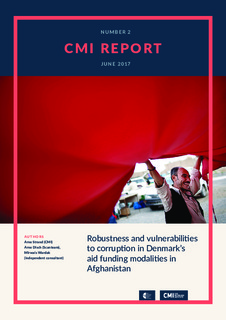| dc.description.abstract | The Danish Embassy’s risk management and mitigation system is well-structured and effective. The Embassy has a coherent and comprehensive anti-corruption approach that addresses both internal and external dimensions, and includes short-term and long-term interventions.
Regarding internal anti-corruption management, the general policies and guidelines for Danish development cooperation have been taken fully on-board, and made more operational in the Afghan context with a specific action plan and internal systems and procedures that are being applied in practice. The constant updating of skills, the operational responsibilities for monitoring corruption risks that all programme staff are given combined with a well-known focal point and strong support from Embassy management means that both procedures and practices are being applied on a systematic basis, with staff being held accountable in real-time.
The development programme provides resources to both public and civil society bodies engaged in resource management oversight and control, covering a range of dimensions for addressing corruption risks. Given both the embeddedness of corruption across what seems to be most aspects of life in Afghanistan today, while at the same time there is clearly a serious commitment from the highest levels of Government to address this problem, this support is strategic. The challenge is of course to ensure that it is optimized in light of what other actors are providing, how donor coordination is utilized in addressing corruption risks and to make the most of Denmark’s comparative advantage in these efforts. | |
